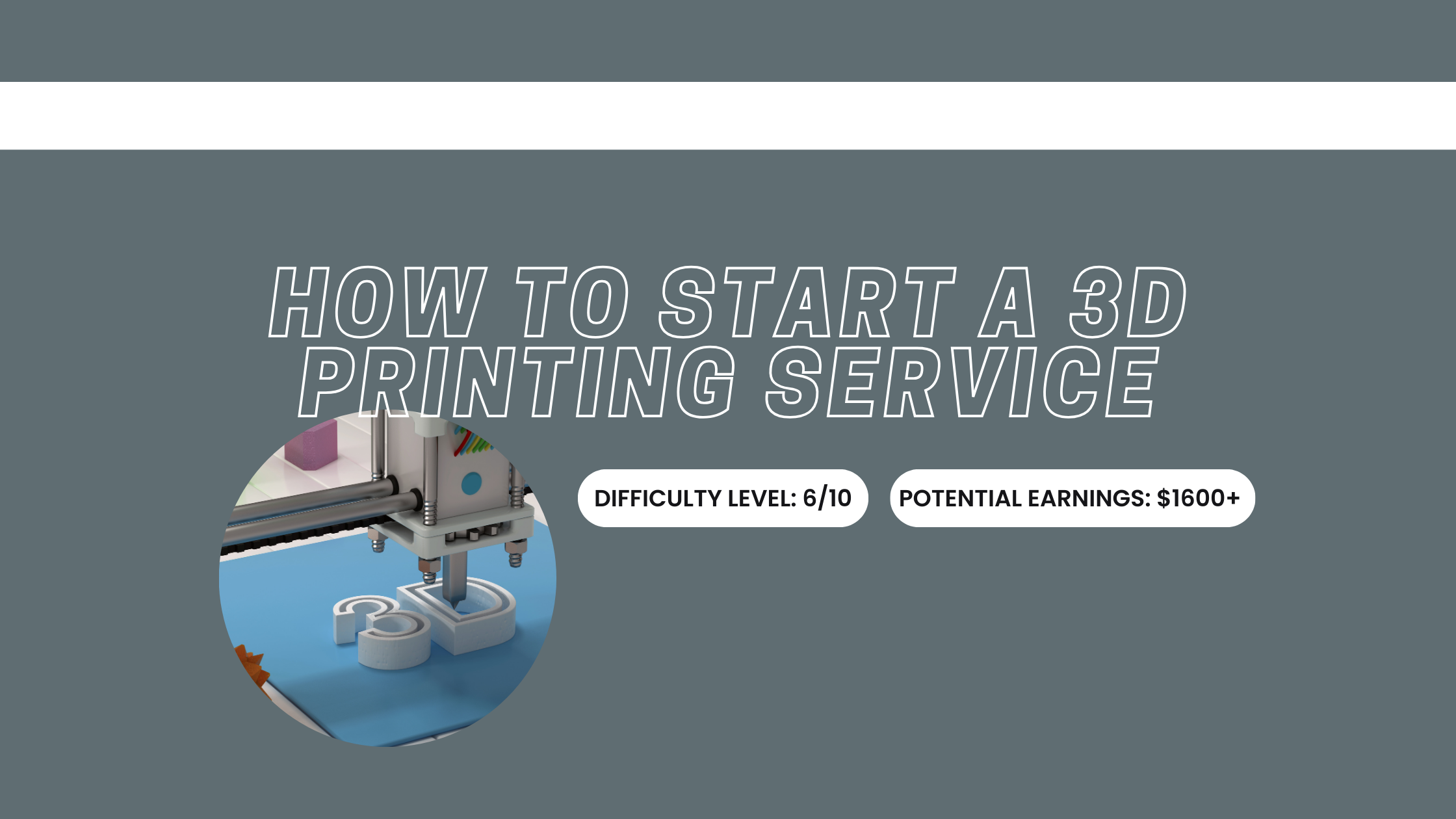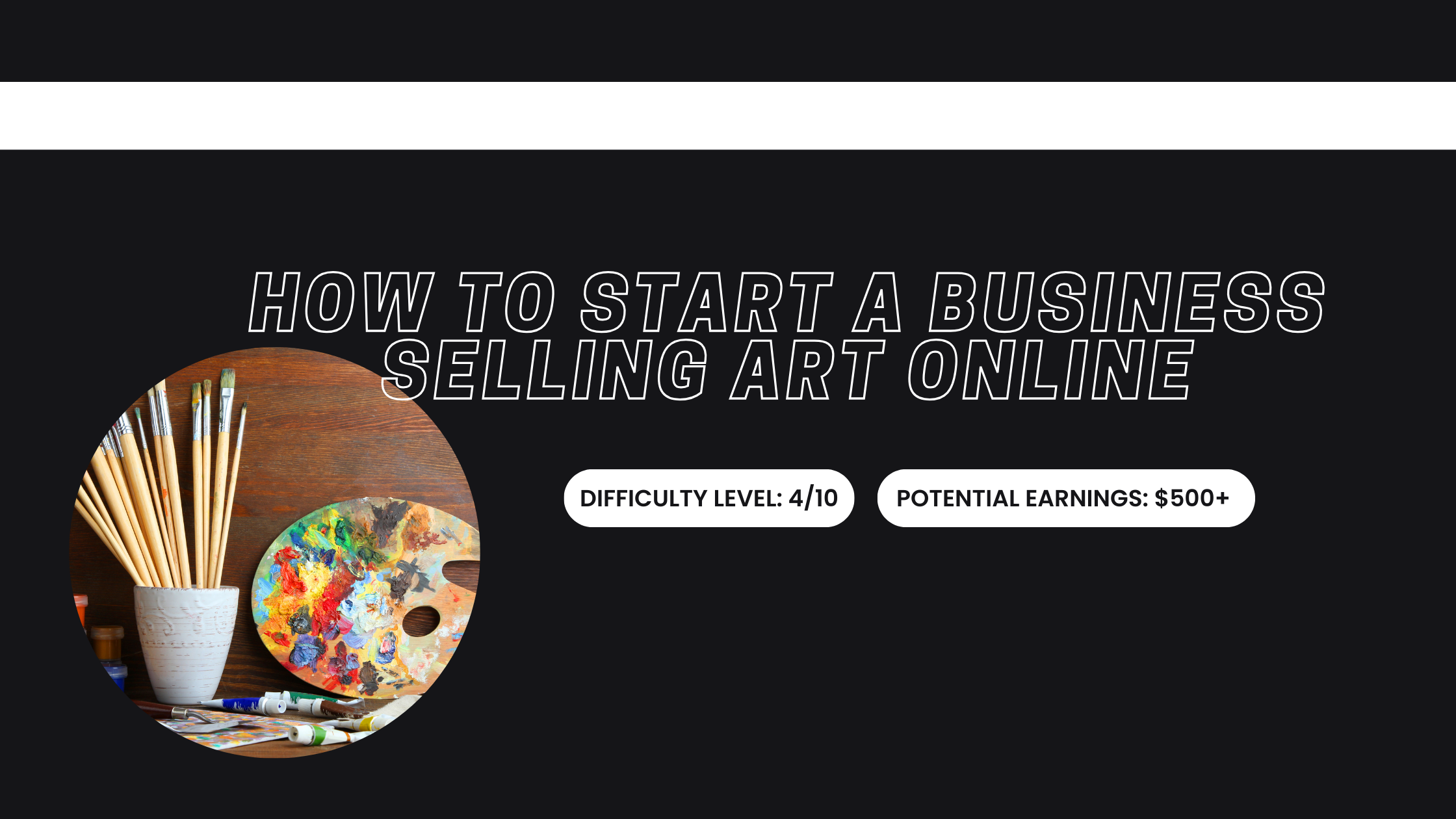How to Start a Business Selling Art Online
Time & Money
Difficulty: 4/10
Weekly Time Commitment: 10-15 hours
Earnings Per Month $500 - $5,000 (scales with demand and marketing)
Is This Side Gig For Me?
For artists who live to create and don’t mind rolling up their sleeves for a little e-commerce elbow grease, this side hustle could be a masterpiece in the making. If you’ve ever wondered how to start an art business, the answer begins with combining your creative spark with a dose of entrepreneurial grit. It’s ideal for those comfortable navigating social media algorithms, crafting clever captions, and answering messages from curious buyers at 11 p.m. But beware: if engaging in self-promotion or dealing with logistical issues makes you cringe, this gig might not be the one for you.
On the flip side, if you’re someone who thrives on engaging with an online community and experimenting with new trends, this could be your calling. And once you discover the best places to sell your art online, you’ll be well on your way to turning that passion into profit.
Preparation
Be basic before you shout your art into the online void: a killer portfolio. Gather up your most memorable pieces - artwork that makes people want to open their wallets. Wondering about how to start an art business? Step one is putting your best brushstroke forward.
Next up - e-commerce. Digital galleries can be on Etsy, Shopify or a custom-built website. Both have advantages - Etsy has an audience built in, while Shopify has endless customization options - but neither is perfect. Don't forget there is no one-size-fits-all when it comes to finding the best place to sell your art online. Finding the right site for you will depend on the type of art you produce as well as your personal goals.
Lastly, learn presentation. Invest in quality photographs or scans of your work. Nobody wants to buy a poorly developed photograph. Those crisp, well-lit images will help your art shine.
Execution
Choose an E-commerce Platform
Choosing the right platform is a critical step, and involves considering your needs as well as your ideal client. Etsy is great for dipping your toes in the water, while Shopify lets you dive headfirst into custom branding. Want complete control? Build your own website and become the maestro of your online presence. Compare fees, features, and audiences to make your choice. Remember, the best places to sell your art online aren’t one-size-fits-all.
Set Up Your Online Store
Think of your online store as an extension of your artistic self. It should be as inviting as a cozy gallery but as functional as a vending machine. Craft compelling product descriptions that tell a story and entice buyers. Add an “About” section that gives visitors a peek behind the curtain—let them connect with the artist, not just the art.
Develop a Marketing Strategy
Your marketing strategy doesn’t have to be complicated, but it does need to be consistent. Use social media platforms to share your process, tell stories about your inspirations, and engage your audience. Host live Q&As or create time-lapse videos of your work. Collaborate with influencers who align with your aesthetic, and don’t shy away from paid ads—they can be the turbocharge your visibility needs. When you’re learning how to start an art business, marketing is where the magic happens.
Price Your Artwork Competitively
Pricing art is part science and part feeling; the usual awkward pairing. It can be helpful to research what others in your niche charge. Consider factors like materials used, time required, and shipping costs. Offering different tiers—such as original works, prints, and commissions—broadens your appeal and attracts more buyers.
Create a Shipping and Handling Process
Develop a system for securely packaging your artwork to avoid damage during shipping. Invest in protective materials like bubble wrap, sturdy cardboard, and sealable sleeves. Outline shipping policies and timelines on your store to manage customer expectations.
Engage with Your Audience
Building relationships with your audience helps create loyal customers. Respond to comments and messages, and share stories that give insight into your creative process. Hosting Q&A sessions or live art streams can strengthen your online presence and foster a community.
Bumps In The Road
Inconsistent Sales
You may see fluctuating sales at first. But don't let this put you off. It's all about the long game, so stay patient and focus on delivering great work.
Marketing Challenges
High competition means standing out online is increasingly important. Good quality content and targeted ads can improve your visibility. Investing time learning SEO for your listings can also improve your search rankings.
Handling Returns and Damages
Having to deal with returns or damaged artwork during shipping is frustrating to say the least. Set clear return policies and invest in reliable shipping with insurance.
The Final Brushstroke
Learning how to start an art business is a journey of blending creativity with business savvy. From picking the right platform to discovering the best places to sell your art online, success lies in balancing the practical with the passionate. With a strong strategy and an unwavering belief in your work, you’re not just selling art—you’re selling a piece of yourself. Now, grab your tools and let the world see your masterpiece!
Continue Learning

3D Printing Business
A guide on how you can start a 3D printing service, including tips and tricks such as how to budget and manage your time effectively.
